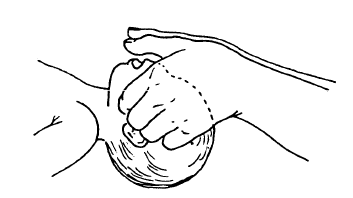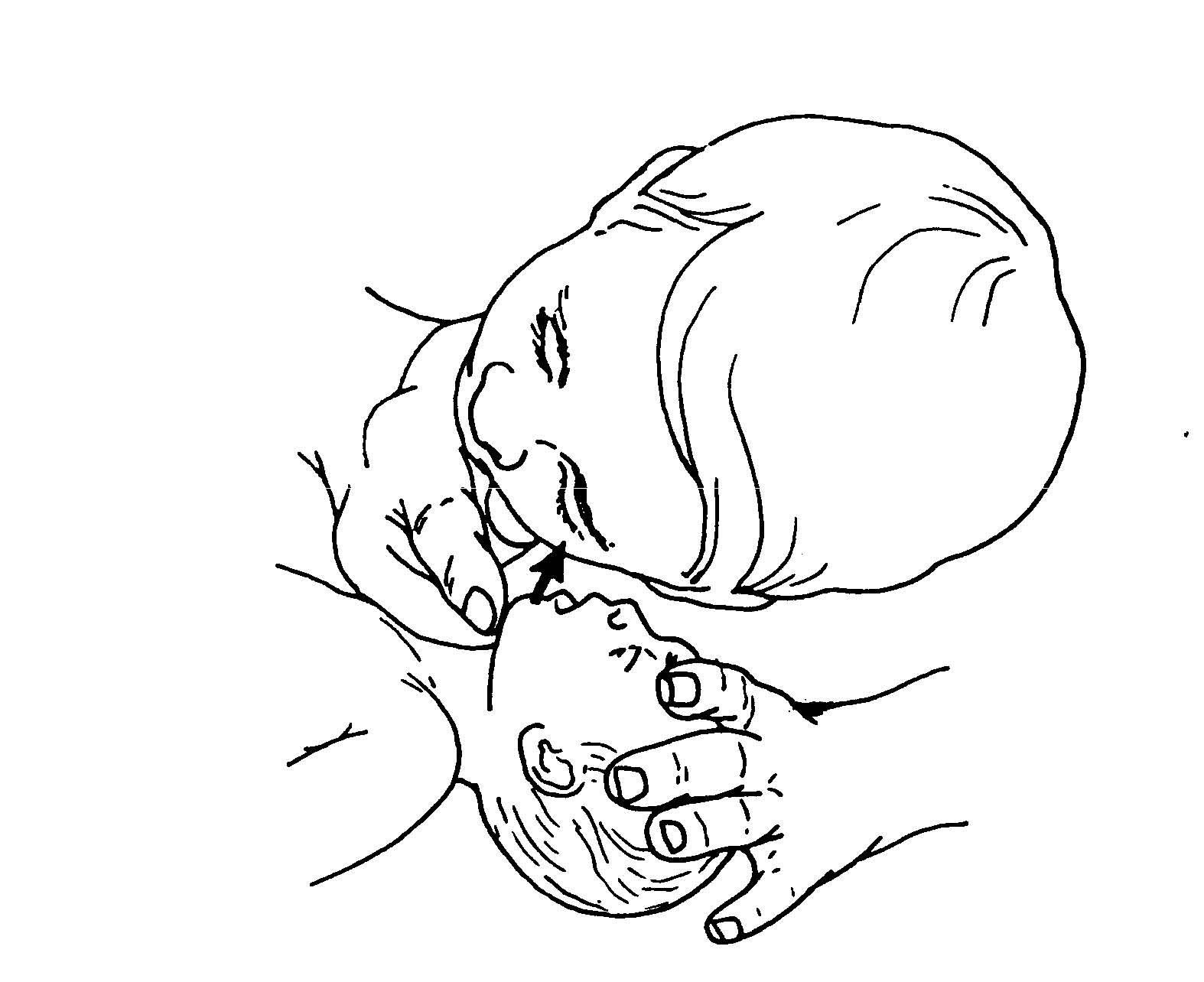Cardiopulmonary Resuscitation
Lesson 6: Perform Cardiopulmonary Resuscitation on a Child or Infant
6-2
6-2. OPEN THE AIRWAY
a. Call For Help. Call for assistance. You can do this at the same time you are positioning the casualty. If someone responds to your request for aid, send him to obtain professional medical help while you perform rescue breathing or CPR. Do not leave the casualty in order to obtain help.
b. Position the Casualty. Lay the casualty on his back on a firm, flat surface and out of danger. When moving an infant or child, always support the head and neck to prevent rolling and twisting. Position his head so that his face is up and his nose openings are straight up over his ear openings. This provides a slight head-tilt which will help to open the airway, but without hyper-extending the neck as does the head-tilt/chin-lift method used with adults. If an infant's head is tilted too far back, his trachea may collapse because the tracheal rings are not sufficiently developed.
c. Open the Airway. Open the casualty's airway using the modified head-tilt/chin-lift unless a head or spinal injury is suspected. If you suspect a spinal or head injury, use the modified jaw-thrust. The likelihood of a spinal or head injury is great if a child or infant is found at the scene of an accident.
(1) Modified head-tilt/chin-lift.
(a) Kneel at the side of the casualty.
(b) Place two or three fingers of your hand that is closest to the casualty's head on his forehead. In older children, apply enough pressure to tilt the head back slightly. In infants, the fingers keep the head in proper position.
(c) Lift the casualty's jaw using one or two fingers of your hand that is closest to his feet. Be sure that your fingers rest on the bony part of the chin and not on the soft part under the chin. The child's teeth (infant's gums) should be separated so that air can enter and leave his mouth. Do not use your thumb to perform the lift. As with an adult, the chin-lift moves the tongue forward so that it is not blocking the casualty's airway.
(2) Modified jaw-thrust.
(a) Position yourself above the casualty's head.
(b) Place one hand on each side of the casualty's head. Let your elbows rest on the surface on which the casualty is lying.
(c) Place the tips of two or three fingers of each hand under the angles of the casualty's jaw. (This is done on both sides of the casualty's jaw.)
(d) Lift the jaw upward gently with your fingertips (figure 6-1). The mouth should not be closed as this could prevent air from entering the casualty's airway.

Figure 6-1. Performing a jaw -thrust on an infant.
d. Check for Breathing. Position your ear over the casualty's mouth and face his chest (figure 6-2).
(1) Look for the rising and falling of the chest. If the casualty is an infant, also observe the abdomen since infants use their abdominal muscles to assist in breathing.
(2) Listen for the sound of breathing (inhalation and exhalation).
(3) Feel for air movement on the side of your face caused by the casualty exhaling.
Figure 6-2. Checking an infant for breathing.
e. Evaluate Your Findings.
(1) If your check shows that the casualty is breathing, maintain his airway and examine him for injuries. Check on the casualty's breathing periodically. Be prepared to administer rescue breathing or CPR should the casualty stop breathing.
(2) If your check shows that the casualty is not breathing, begin rescue breathing (paragraph 6-3) immediately.


